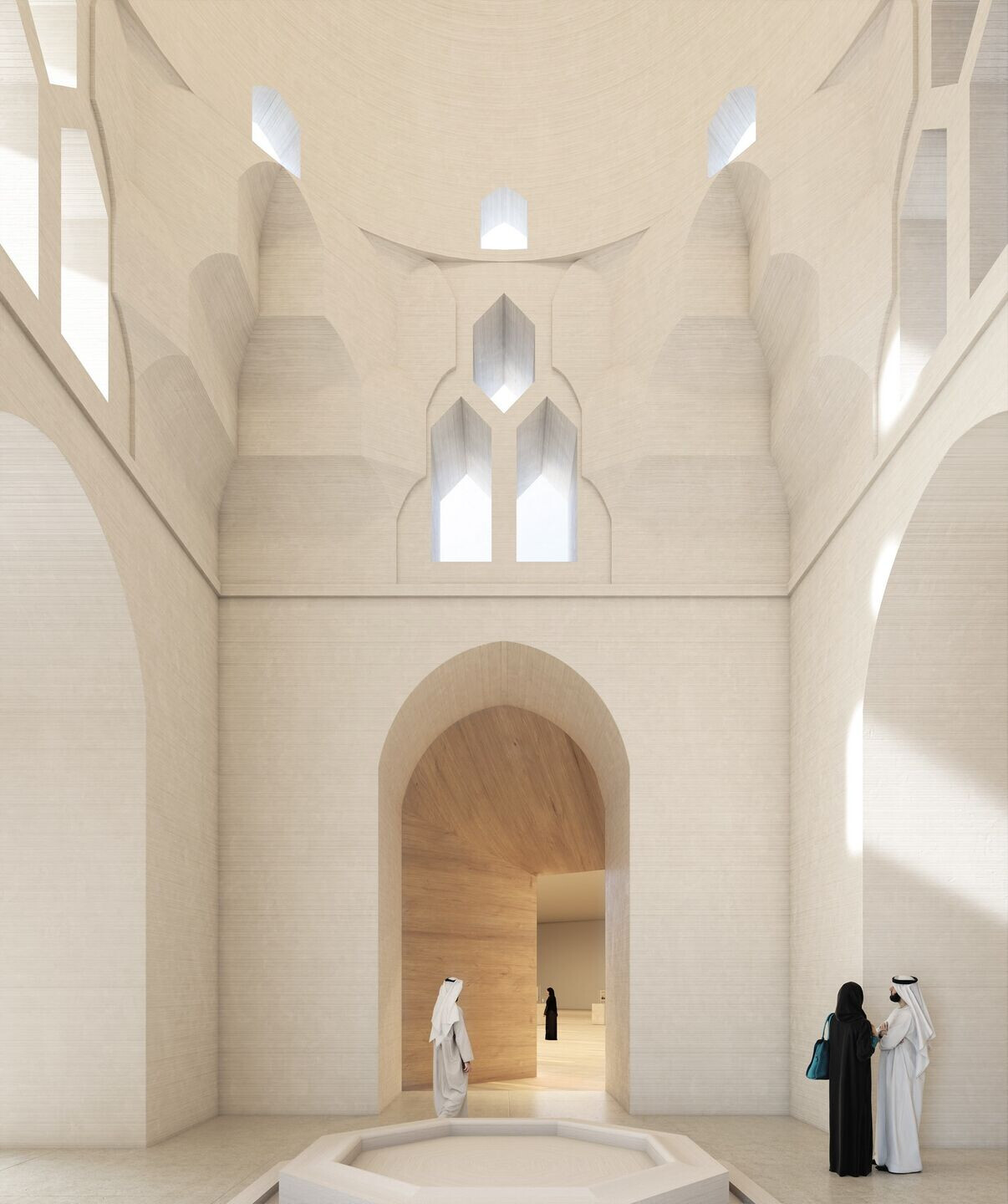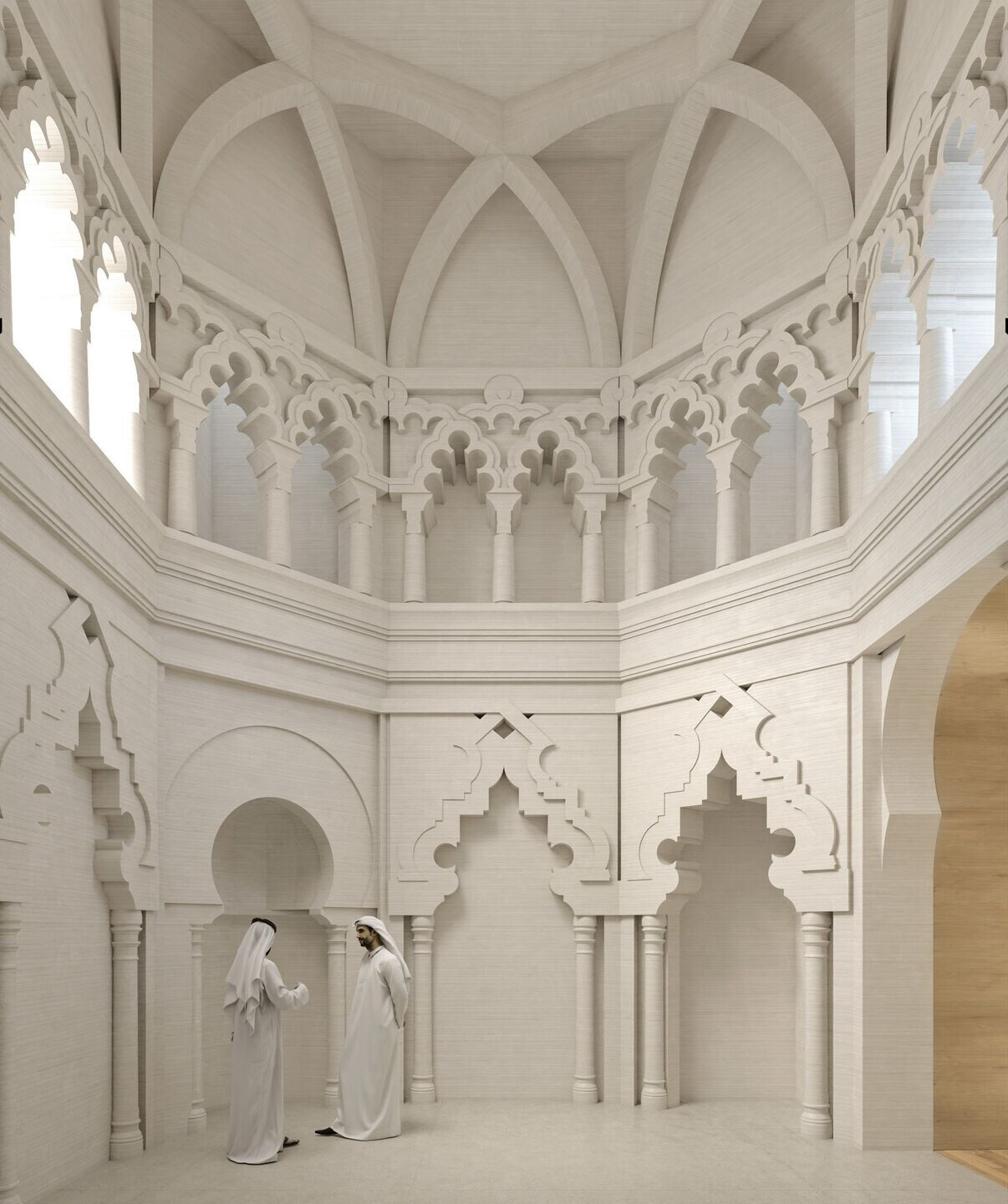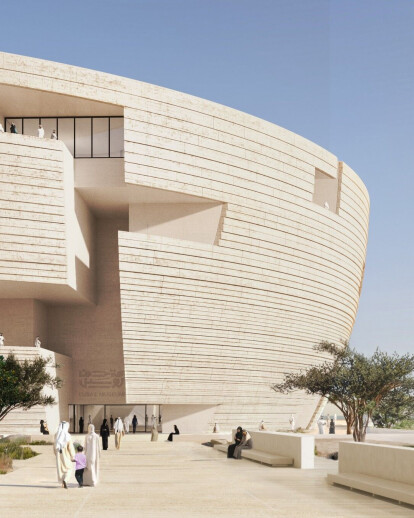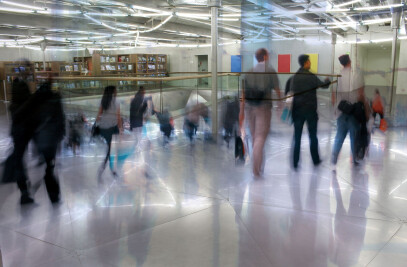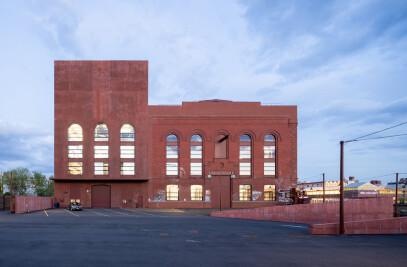Lusail Museum is a global think tank and a world-class art museum that aims to serve as a platform for diplomacy while providing a setting for discourse on the historic and contemporary relationships, exchanges, and influences between cultures. The building is designed to be an engaging public destination with spaces for exhibition, education, research, art preservation and public events.
Located on Al Maha Island in Lusail – the home of the Founder of Qatar, Sheikh Jassim bin Mohammed bin Thani – the museum will act as a local cultural anchor with a global voice. The site is a man-made island shaped by topography and an indigenous landscape. Our master plan has been developed to bring together diverse but complementary programs located throughout this landscape, creating an ‘ecosystem’ that can grow and change over time. Walled gardens placed throughout act as counter points to the more arid landscape, enriching the visitor experience. The museum itself occupies the southern tip of the island, acting as a physical marker within the island. The precise geometric form of the building is both specific and universal – a truncated sphere, seemingly partially buried in the earth. The building exterior is rough, earthen, sand-like and resilient, in response to its coastal setting; it appears as if it is a piece of the land itself.
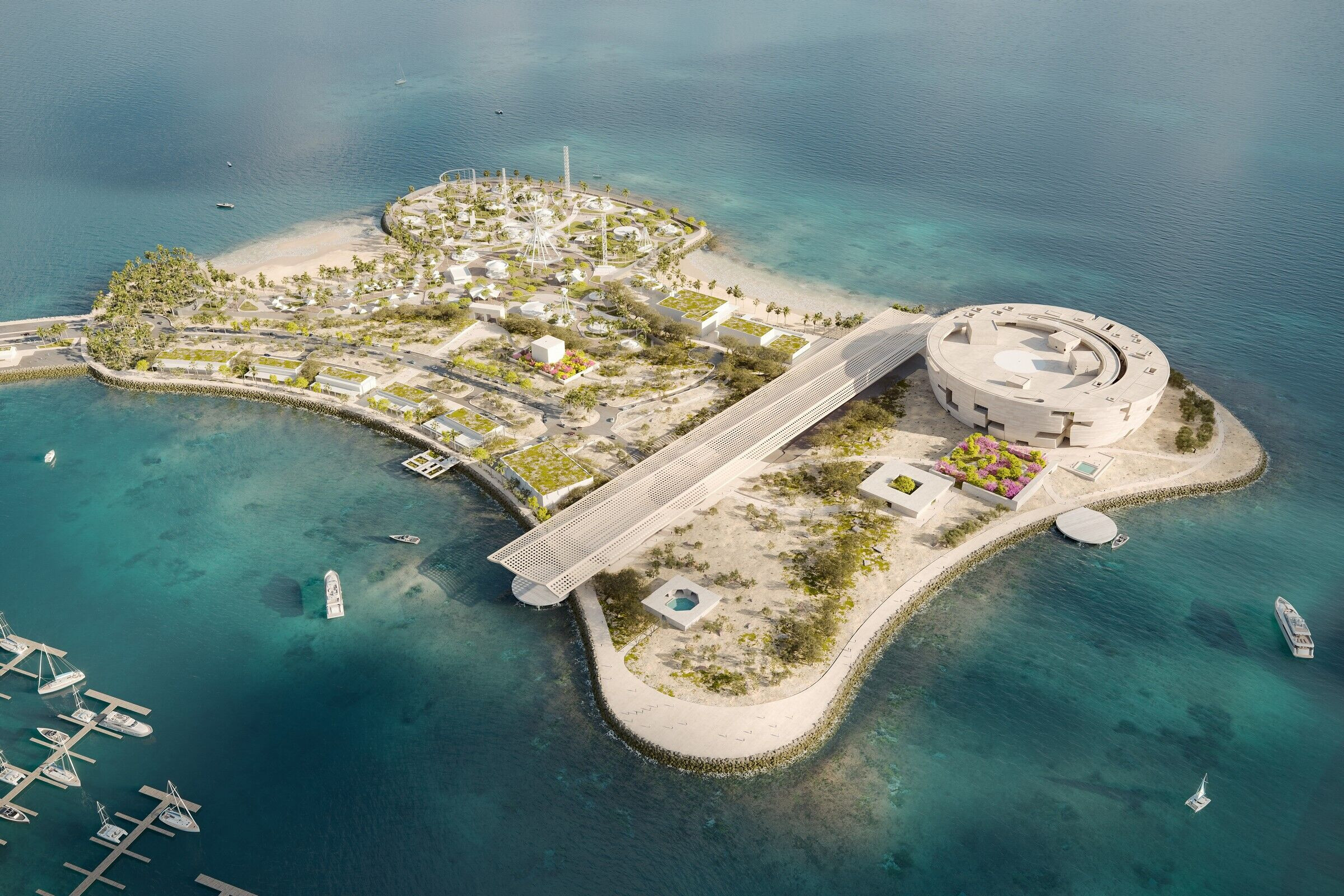
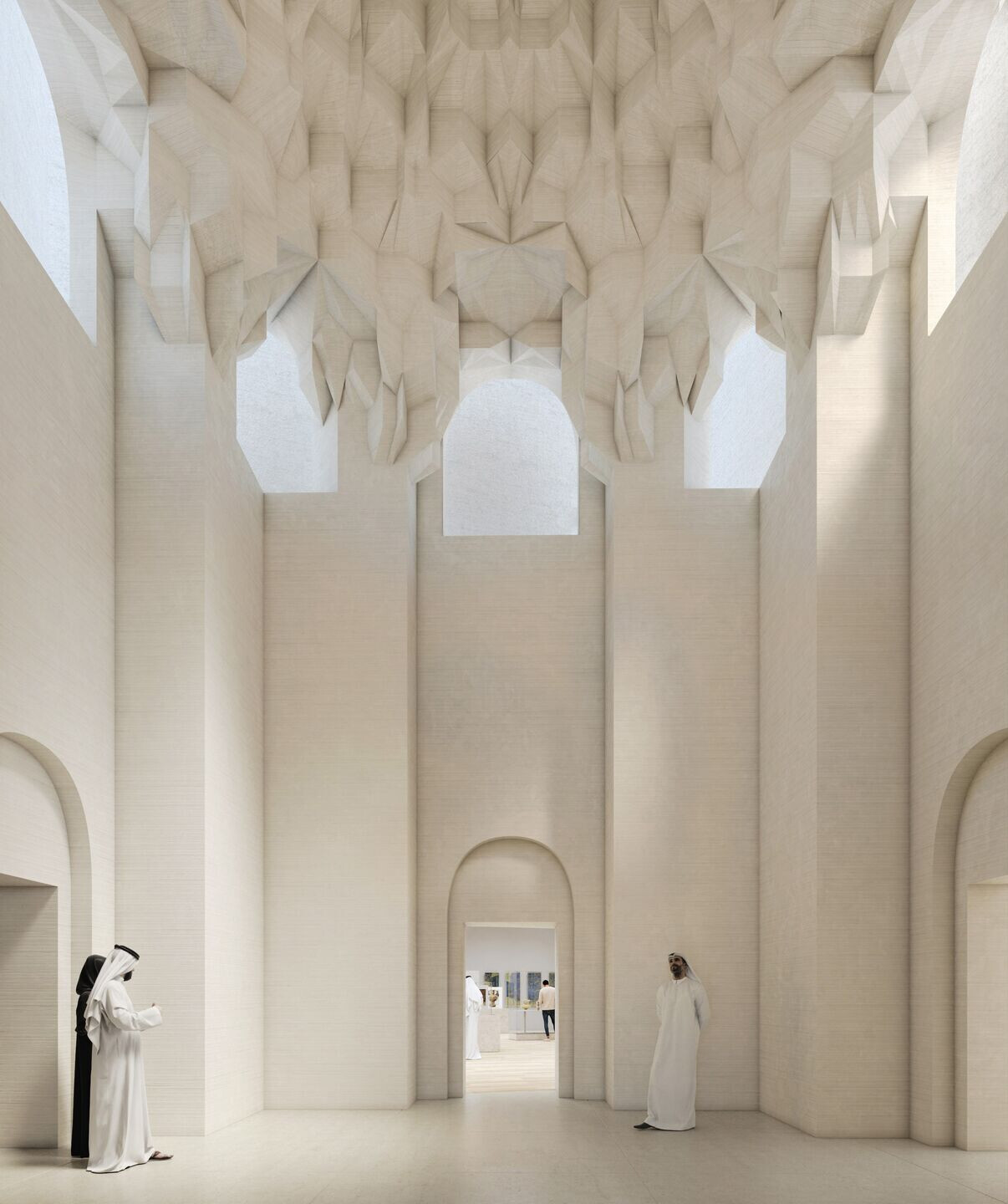
Three intersecting spheres shape and carve the volume of the building into two distinct parts: the first resembles a full moon, while the second resembles a crescent moon that is offset from its full counterpart. The space between these two forms is a crescent-shaped internal street naturally lit from above; it serves to connect the entrances of the museum to the central lobby and other public functions such as a library, auditorium, shop, café, and prayer space. The building’s internal organization is conceived as a vertically layered souk with diverse, complex spaces and uses dispersed within the main body of the museum - a miniature city contained within a single building that offers visitors a multifaceted journey. Daylight enters the interior spaces through deeply recessed windows cut out of the façade, protecting the interiors from direct sunlight; the surrounding sea and city of Lusail remain constantly visible. Several accessible terraces are similarly carved out of the façade, used either as landscaped gardens or activated as outdoor galleries.
Within the robust mineral expression of the building, specific spaces are inserted as counterpoints, providing different scales, material qualities, and sensory experiences for the visitor. A central sculptural polished plaster stair, a reflective metal prayer space, a wooden-paneled library, a soft and intimate auditorium, and several cushioned and upholstered niches throughout all feature a variety of haptic qualities and materials such as wood, textiles, metals, and ceramic tiles. Collaborations with local and regional artisans and craftspeople will ensure a direct connection back to the local vernacular and reinforce the project’s role in preserving historic trades and fostering cultural exchange.
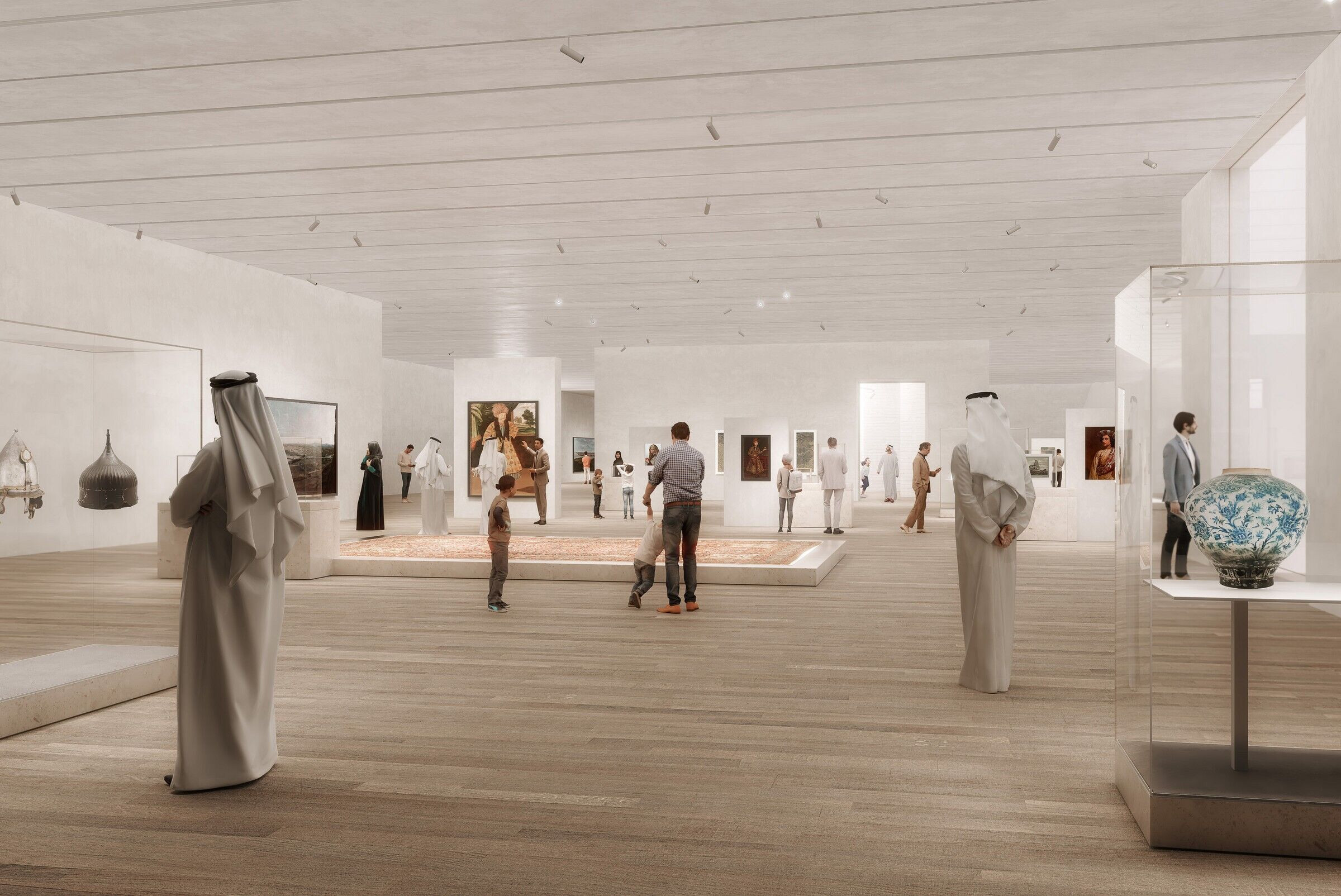
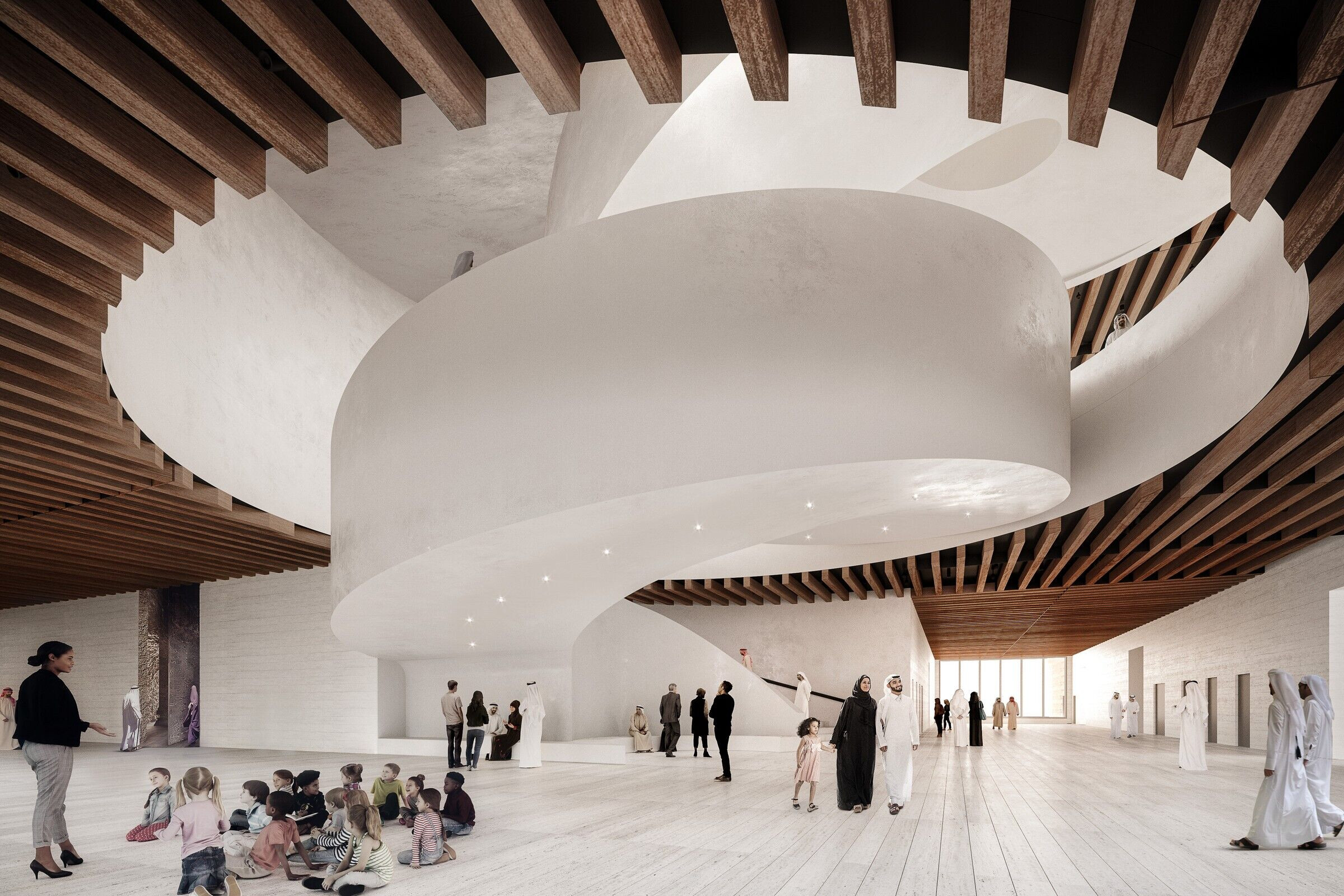
The display spaces on the gallery floors differ in shape and proportion depending on their location, yet all provide flexibility for various types of exhibitions. Four abstract replicas from the interior of important historical buildings are inserted into the top gallery floor as anchor spaces; The dome covering Murat III’s bedroom pavilion in the Palace of Topkapi in Istanbul (1579); the dome of the Jameh Mosque in Natanz (1320); the Ablution fountain in the courtyard of Ibn Tulun Mosque in Cairo (1296) and the Aljafaria dome in Saragossa (1050); four cupolas with distinct geometry and ornamentation relating to their geographical heritage. Pendentives, cross arches, muqarnas and squinches are the defining geometries of the selected dome typologies. They are used to break the sequence of the more traditional galleries and to provide exceptional curatorial and educational opportunities while offering unexpected spatial experiences. The dome has been chosen as the architectural typology for these four rooms, each of which is universal and specific at the same time; universal because domes have appeared across cultures throughout time, and specific because the singular ‘ideal’ form of the dome has developed variations through local geographic and cultural influences.


A public, shaded roof terrace, appearing as a crater-like depression carved out of top of the building mass, is surrounded by various programs including a restaurant, member’s lounge, gardens, and chambers containing drinking fountains; the terrace will be used for small and large-scale events such as food fairs, book fairs, open-air cinema, fashion shows and educational workshops. Four cube-like volumes enclose the tops of the anchor rooms on the roof terrace and bring structure to the large, circular outdoor space and allow daylight into the spaces below. Voids cut into the perimeter wall of the roof terrace provide framed views back to the island, the sea and the city of Lusail.
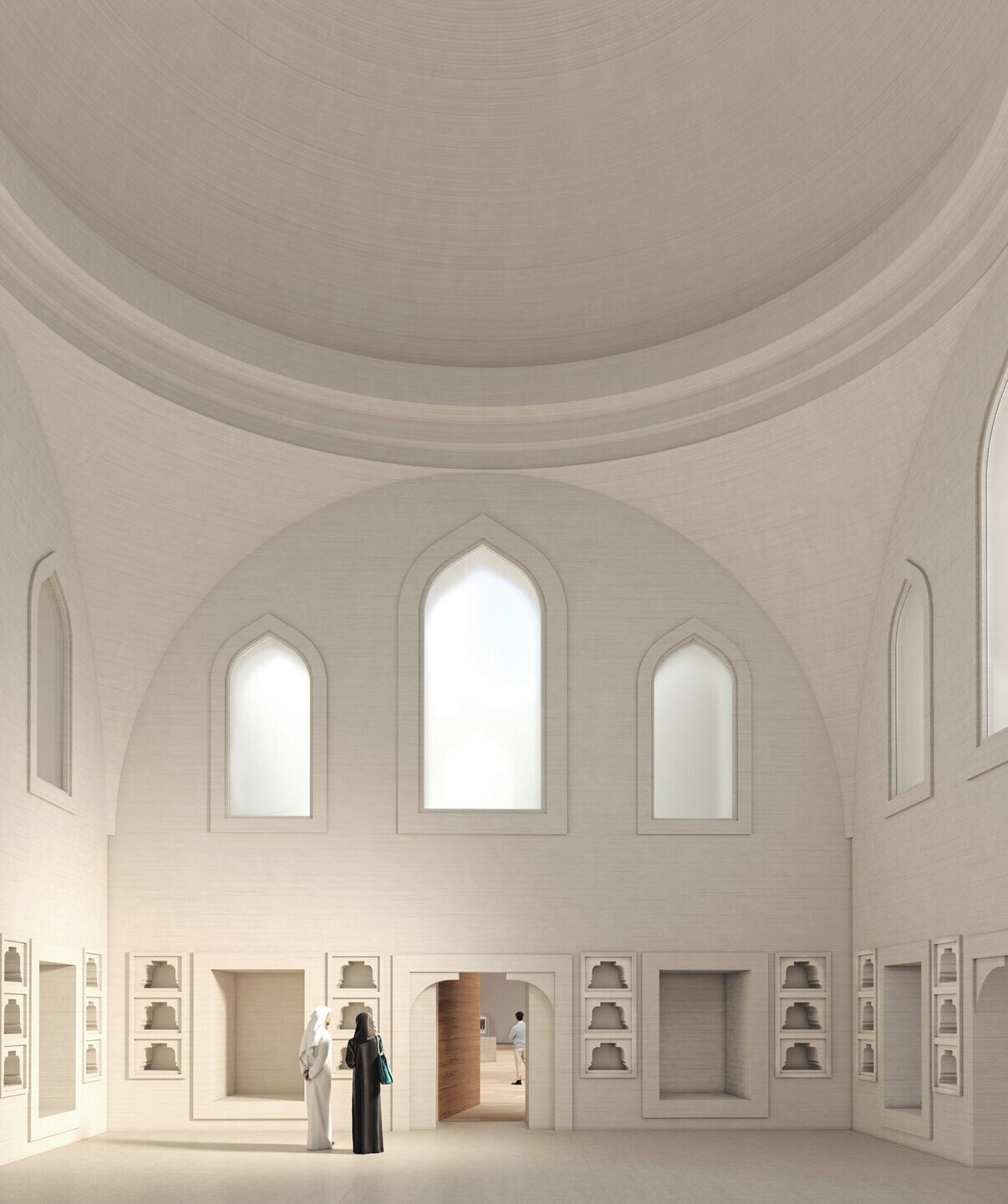

Team:
Architect: Herzog & de Meuron
Client: Qatar Museums, QM Tower, Doha
Client Representative: Qatar Museums, Hafid Rakem
Herzog & de Meuron Project Team:
Partners: Jacques Herzog, Pierre de Meuron, Ascan Mergenthaler (Partner in Charge)
Project Team: Enrique Peláez (Associate, Project Director), Michael Bekker (Associate, Project Architect)
Abel Blancas, Adriana Hernández Arteaga, Amro Sallam, André Manso, Andrew Tétrault, Antonio Torres Tebar, Arrate Abaigar Villota, Aurélien Caetano, Axel Vansteenkiste, Bruno de Almeida Martins (Visualization), Carla Krehl, Christina Liao, Ciarán Grogan, Colm O'Brien, Cristian Oprea, Cristina Fernández, Cristina Roman Diaz, Daisuke Hirabayashi, Elie Metni, Enrique Peláez, Eva Ho, Felipe Pecegueiro Curado, Franca Miretti, Francesca Mautone, Francisco Ramos Ordóñez, Frédéric Beaupère, Gonzalo Peña, Héctor Arderius, Human Wu, Ines Li-Wearing, Iwona Boguslawska, James Albert Martin, Jan Brosch, Jason Whiteley, João Filipe Varandas, Johannes Rudolf Kohnle, Jon Morrison, Jonas Vistesen, Jorge Sotelo de Santiago, Joris Jakob Fach, Juan Laborda Herrero, Keisuke Ota, Kenneth Wong, Leticia Olalquiaga Cubillo, Mahfuz Sultan, Mai Komuro, Marcin Ernest Mejsak, Marcin Kurdziel, Maria Galustian, Maria Krasteva, María Luisa León Palacios, Marta Colón de Carvajal Salís, Matthew Webb, Michael Bekker, Michal Baurycza (Visualization), Mikolaj Bazaczek (Visualization), Mohammad Al Sabah, Nelson Manuel Magro, Nicholas Lyons, Niklas Nordström, Nuno Ravara, Olesya Vodenicharska, Ondrej Janku, Pablo Garrido, Paul Kath, Paulo Horta Rodrigues, Pawel Krzeminski, Raymond Gaëtan, Shusuke Inoue, Sina Momtaz, Takuji Murakami, Thomas von Girsewald, Tiago Baldaque, Tiffany Wey, Tomás Roquette Rodrigues, Vasileios Kalisperakis (Visualization), Victor Lefebvre, Vladimir Pajkic (Partner in Charge), Xi Yi, Xin Li, Yousef Oqleh, Miriam Fitz (Visulization)
PLANNING:
Design Consultant: Herzog & de Meuron Basel Ltd., CH, Basel, Rheinschanze 6
Executive Architect: Tabanlioglu Mimarlik A.S., TR, Beyoğlu, 67 Asmalı Mescit Caddesi
Cost Consulting: Pro-ge, TR, Istanbul, 257 Büyükdere Caddesi, Nurol Plaza, Workhaus, 21/A,
Cost Consulting: Rider Levett Bucknall, (RLB), GB, Greater London, 60 New Broad Street
Landscape Architect: DS Architecture, TR, Istanbul, Kuloglu Mah. Turnacibasi CAD. No. 9
Executive Architect: CICO Consulting Engineers, Doha, Qatar
MEP & ICT Engineering: Barbanel ME, Beirut, Lebanon
Structural Engineering: Rudolphe Mattar, Beirut, Lebanon
Fire & Safety Engineering: Apave, Beirut, Lebanon
Cost Manager: DG Jones, Doha, Qatar
Architect of Record: JCE Al Jazeera, Doha, Qatar
Acoustics Consultant: Acoustair, The Netherlands
Lighting Consultant: Dinnebier Studio, Berlin, Germany
Transport & Security: Ramboll ME, Dubai, UAE
Sustainability: Seeds, Beirut, Lebanon
Facade Engineering: Emmer Pfenninger, Basel, Switzerland
SPECIALIST / CONSULTING
Other: Tetrazon, Istanbul
Gastronomy Consulting: Tricon Foodservice Consultant, GB, Romford, St James's House,
Gastronomy Consulting MCT Services, (MCTS), AE, Dubai, Michael Chabowski Technical Services
Signage Consulting: Portland Design, GB, Greater London, The White Chapel Building, 10 Whitechapel High Street
SPECIAL COLLABORATORS
Cultural Projects Advisor: Peter Wilson
